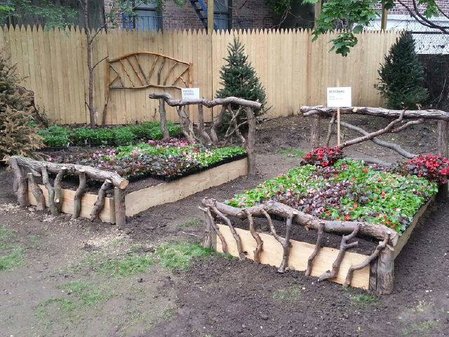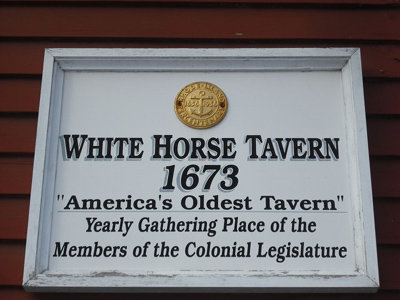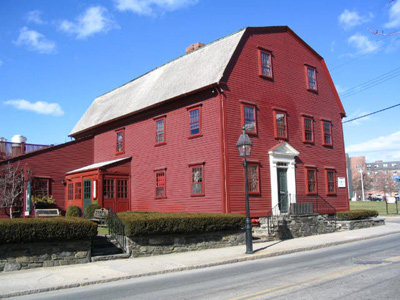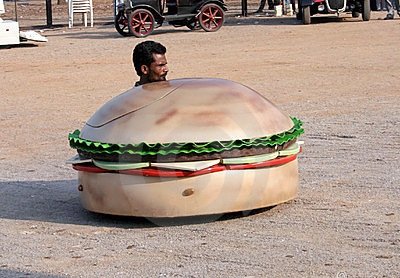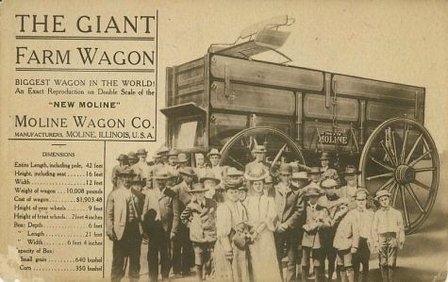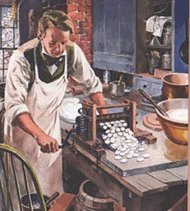Hungry?
Clams, baby, clams.
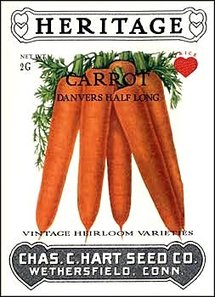 William Woys Weaver on heirloom seeds, right here.
William Woys Weaver on heirloom seeds, right here.
When Wearing Spuds is Required...
Food Tees
Shop? Again? Sure. Food tees here.
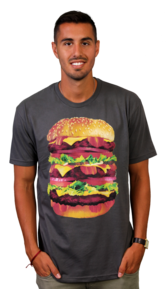
Food Books
Nibble on some food digestibles here.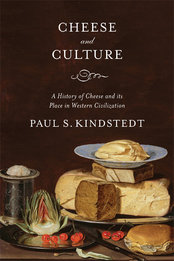
Guest Contributors
Embracing the wider world of food The latest Meat of the Matter explores the nutty business of creating a food museum, with Liz Williams, Southern Food and Beverage Museum, New Orleans.
Clark Tibbits reports in on what's cooking in Lesotho, and explains its organic agriculture approach.
Foodish Quotes
Via LATimes: "“There’s not a whole lot of dignity in the experience of going through a soup kitchen,” ( Panera Bread spokesperson Kate Antonocci ) said. “You don’t feel very good. Your belly may be full, but your sense of self-esteem isn’t. We want to provide food – as well as an environment and people – that everyone can feel good about.”
Via MNN: "There is a lady that makes salads for me and some sort of a juice thing," (George Clooney) says, showing off his organized glass fronted fridge. "One of my New Year's resolutions was to eat better and to do one of those cleanses. Really glad I did that."
Via TPM: “You can’t feed a family on potato chips and Mountain Dew, which is the goal: feeding hungry people,” Florida State Sen. Ronda Storms (R), who introduced a bill to limit what food stamp recipients can buy, told TPM.
Via Yahoo Sports: "You take your first bite of a McDonald's burger and it's like 'Why did I buy this?'" ( Giants star baseball pitcher Tim) Lincecum said to reporters.
"You feel instantly sick. That's what ended up happening with all these places and why I started eliminating them. I take a bite and I'm like 'I can't even finish this.' So I just started going for stuff that made me feel better. I'm not crushing vegetables by any means, but I'm definitely eating better."
Via Salon: Tracie McMillan says: "My grandmother has been telling me since I was a kid, “Eat your vegetables.” I’ve found a lot of sustainable food stuff really inspiring and really exciting, but I really think that people already know about it. What we need to think about is, Why aren’t people doing it?"
Via The Daily: “Paula Deen is going to have to reposition herself now that she has diabetes,” said one source. “She’s going to have to start cooking healthier recipes. She can’t keep pushing mac and cheese and deep-fried Twinkies when she is hawking a diabetes drug.”
Via Time: "( John) Edwards ... can't walk into a restaurant without the risk of getting pelted by dinner rolls."
Foodish Publications
Gastronomica, The Journal of Food and Culture
Okra, the on-line magazine of the Southern Food and Beverage Museum
Condiment: Adventures in Food and Form--Australia
Saveur, a magazine for people who experience the world food first
Todmorden,UK: Edibles for All
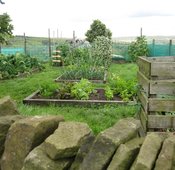
The 15,000-strong town of Todmorden features community gardens where anyone can pick anything, guerilla garden efforts, and all-edible aesthetics. Visit Incredible Edible here.
Food Art
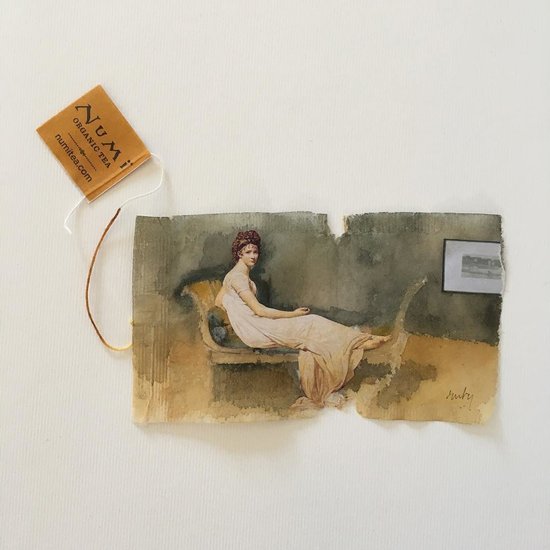
Food Book: Plants, Meats, the Whole Darn Thing
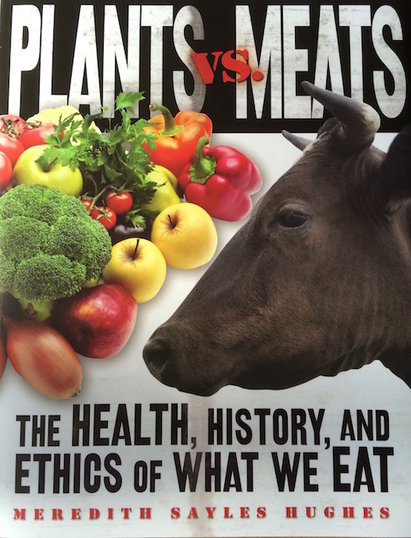
Just out: For Young Adults, or those of you reading at a 7th grade or higher level, the newest from The Food Museum's co-founder, published by Lerner. Asked to do a book on vegetarianism, Hughes delved back into the topic of what people do and/or should be eating. Read, research, try and then decide.
La Vendange ( The Harvest), Autignac, France, 2012
Recipes: Polenta con Funghi, Pancetta: Gennaro Contaldo
Food News: Syrian Refugees Garden in Jordan
Preserving Heritage Breeds
Food in Iran: Tehran
Food/Culture: the Maori
Street Food: Yemen
Street Food: Seoul, South Korea
Food Movies: "Chef"
This is a food movie, a road movie, a Dad-kid bonding movie, a funny flick, and we are famished watching this thing...
Food and Baseball: World Series' Champs SF Giants Grow Veggies!
Food Museums: A Grand Re-Opening in NOLA
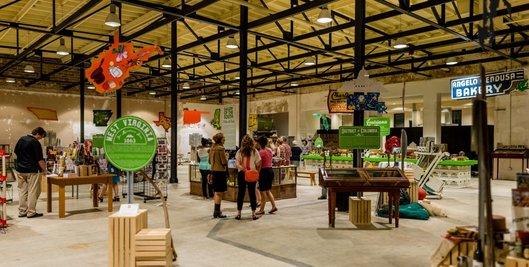 New Orleans' Southern Food and Beverage Museum recently re-installed itself in a new venue, at 1504 Oretha C Haley Boulevard. With 15,000 square feet to play with, this remarkable food initiative, SoFAB, is more fab than ever. Kudos!
New Orleans' Southern Food and Beverage Museum recently re-installed itself in a new venue, at 1504 Oretha C Haley Boulevard. With 15,000 square feet to play with, this remarkable food initiative, SoFAB, is more fab than ever. Kudos!
President and Director Liz Williams' adventures during The Growing of a Food Museum are chronicled right here at The Food Museum. Have a read.
And for more, visit SoFAB online.
Street Food: Iran
Street Food: Turkey
Food Historic: Toasters
Food Themed: Camper Vans
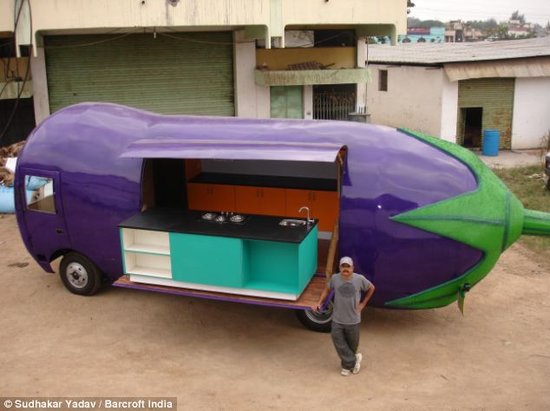 Sudhakar Yadav, from Hyderabad, India, with his "aubergine" van. His cheeseburger-mobile was featured here earlier.
Sudhakar Yadav, from Hyderabad, India, with his "aubergine" van. His cheeseburger-mobile was featured here earlier.
Food Historic: Family "Picnics"
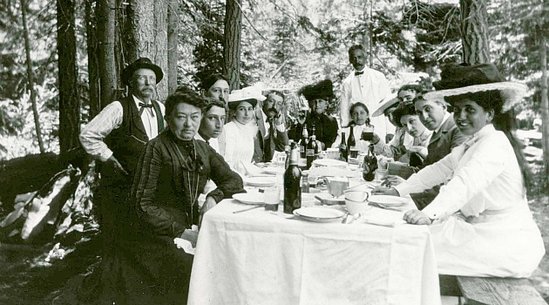 It's 1912, and the Lilienthal Family is gathering for an elegant meal outdoors. Via
It's 1912, and the Lilienthal Family is gathering for an elegant meal outdoors. Via
Food History: Eggplant
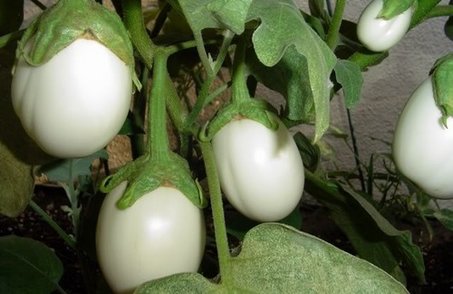
See why it's called "eggplant?" Mind you, though the British in colonial India, seeing and eating this particular variety in some parts of the country, did give the plant its nickname in the 19th century, Brits today call this plant by its French name, aubergine. Likely a native of southeast Asia, eggplant is the only "Old World" member of the Solanaceae family that includes the potato, tomato, and pepper, among others. For a full and delightfully detailed illustrated history of this plant, please visit this offering from Purdue University's contribution to the International Society for Horticultural Science.
Greens in the Bronx: Changing Lives
Food Trends: Eating Bugs
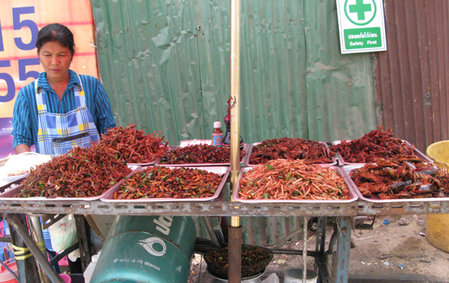
Insects for sale at an outdoor market in Bangkok
Photo and article by Dawn Starin, honorary research associate at University College London.
Feeding the Hungry/Feeding the Privileged from the Plentiful Wild
"Yea, even the wasting locusts’ swarm, Which mighty nations dread,
To me nor terror brings nor harm—For I make of them my bread."—From Song of the Wild Bushman by Thomas Pringle, 1825
Over the past few years, reality TV has often used insect meals as a gross-out test or punishment. On the Late Show with David Letterman, the Mexican film actor Salma Hayek explained that she found insects quite tasty. Upon hearing this, many viewers apparently were appalled.
Why do some people find insect eating normal and others—most notably Americans north of Mexico and Europeans—find it repulsive? The simplest answer is that “food” is a culturally specific concept. An insect-eating society teaches its children to eat insects. People who do not grow up with that custom may find it hard to imagine. Such cultural differences often have a geographical and economic basis. In general, there are fewer edible insects in temperate climates, and therefore it may have been inefficient in terms of time and energy to incorporate insects into the diet. Quite simply, it wasn’t worth it. But times are changing, and so are diets.
Our earliest primate ancestors were insectivores, and our closest living relatives, the chimpanzees, famously dine on termites that they fish out of narrow tunnels in mounds, using rudimentary handmade tools. Insect eating, or entomophagy, is an age-old human practice. In Leviticus 11:22, among the laws codified and observed by the Israelites between 3,500 and 2,500 years ago, it is stated that “even these of them ye may eat: the locust after its kind, and the bald locust after its kind, and the cricket after its kind, and the grasshopper after its kind.” Pliny wrote that beetle grubs (now thought to have been the larvae of stag beetles) were so prized that they were fed on meal to fatten them up and enhance their flavor. And the German explorer Heinrich Barth, in his 1857 Travels and Discoveries in North and Central Africa, wrote that people who ate locusts could “enjoy not only the agreeable flavor of the dish, but also take a pleasant revenge on the ravagers of their fields.”
Continued here
Filmed Food: "Downton Abbey."
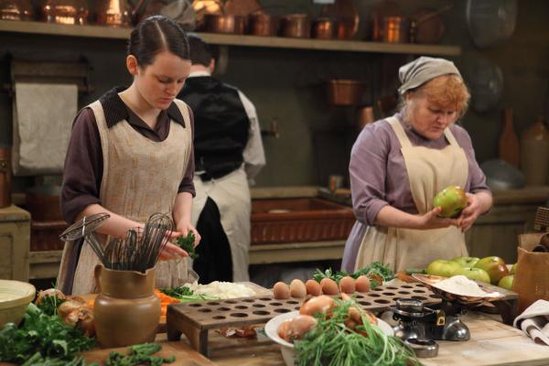
Food History: People Eating People at Jamestown
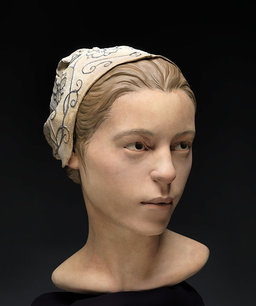
At the left is 14 year-old "Jane," as reconstructed by experts investigating cannibalism at Jamestown, the oldest permanent English colony in America. It's likely that Jane's flesh was eaten, after her death, by settlers in Virginia struggling through a period of virtual starvation, 1609-1610.
Drought conditions, apparent lack of agricultural experience, infrequent resupplying from England, and poor relations with the native population after the return to England of Captain John Smith, contributed to the "Starving Time."
“Historians have gone back and forth on whether this sort of thing really happened there,”( the Smithsonian's forensic anthropologist Douglas) Owsley says. “Given these bones in a trash pit, all cut and chopped up, it's clear that this body was dismembered for consumption.”
Read the full story here via Smithsonian.com.
A new batch of settlers arrived In Jamestown just as the weary survivors were leaving, and by 1613 had decided that a non-edible, tobacco, would be their savior. As indeed it was, in cash crop terms. Africans captured in Angola and brought to Jamestown in 1619 as indentured servants to work the fields began the shift towards slavery in Virginia. By the mid 17th century, slave-tended tobacco dominated the landscape.
Today Jamestown Settlement does a month of garden activities called "Seed to Stalk," and it all starts June 1. 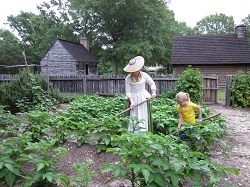
These two are working what appears to be a potato patch, part of a sister historic site, Yorktown Victory Center, which includes a 1780's farm. The potato, first brought to Jamestown in 1621, started to appear regularly in American gardens in the early 1700's.
Food History Preserved: Sylvester Manor, New York
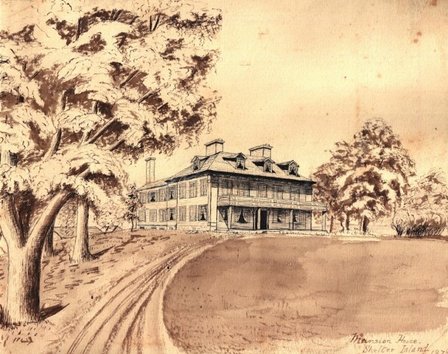
The manor was the center of an 8000 acre island, Shelter Island, part of New York's Long Island. Its history is entwined with the early American/ Caribbean sugar trade, its agricultural production and wealth once dependent on slaves who arrived in 1653.
Sylvester Manor today is a 243 acre non profit organic farm and educational center, its buildings restored or under restoration, and its future in food fairly assured. The National Trust's Preservation Magazine features the Manor, its web of food stories neatly untangled by writer Nat Schweber, in its Spring issue. Read more here.
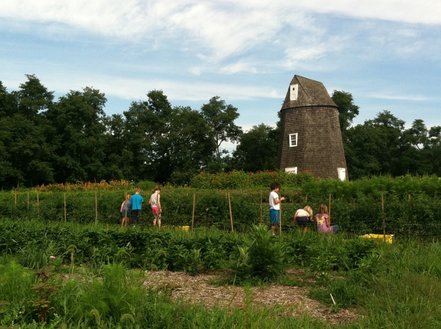
Food Historic: Notable Gardeners

Via Melinda Byrd
Mr. Thoreau
Henry David Thoreau sought simplicity in his little house at Walden Pond, on land owned by his buddy Ralph Waldo Emerson, even though his mother did his laundry each week...still, he succeeded in growing beans, loads of them. And, of course, he wrote "Walden," the much-loved homage to the pleasures of the everyday, and the pleasures of plants, among many other topics.
Here is Henry on beans: "What shall I learn of beans or beans of me? I cherish them, I hoe them, early and late I have an eye to them; and this is my day's work."

Her Majesty, The Queen, aka, QE2
Yes, the Queen has a veggie garden on the grounds of Buckingham Palace, installed to keep pace with Michelle Obama's veggie initiatives, who knows? In any event, the plot is 10 yards long, and is the first such garden at the Palace since WW2.
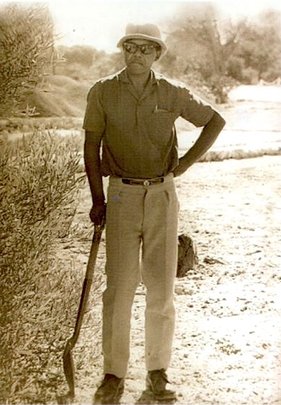
Via City Gardener
Nelson Mandela, prisoner and gardener.
“A garden was one of the few things in prison that one could control. To plant a seed, watch it grow, to tend it and then harvest it, offered a simple but enduring satisfaction. The sense of being the custodian of this small patch of earth offered a taste of freedom.
“In some ways, I saw the garden as a metaphor for certain aspects of my life. A leader must also tend his garden; he, too, plants seeds, and then watches, cultivates, and harvests the results. Like the gardener, a leader must take responsibility for what he cultivates; he must mind his work, try to repel enemies, preserve what can be preserved, and eliminate what cannot succeed.”
Food in Animation
Food in Garden Design: Garden "Beds"
Food Discovery: The Apple
From The Atlantic, an artistic inquiry into the apple, native to the Kazakhstan region, whose diversity, DNA, and beauty urges us to take notice.
"Every apple for sale at your local supermarket is a clone. Every single Golden Delicious, for example, contains the exact same genetic material; though the original Golden Delicious tree (discovered in 1905, on a hillside in Clay County, West Virginia) is now gone, its DNA has become all but immortal, grafted onto an orchard of clones growing on five continents and producing more than two hundred billion pounds of fruit each year in the United States alone." Continue reading here.
Via Jessica Rath
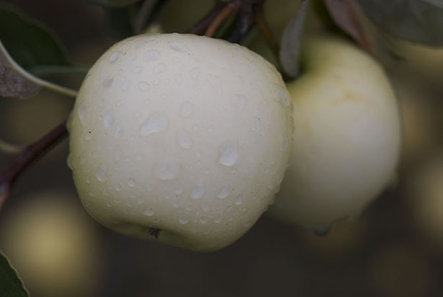
Food Historic Site: White Horse Tavern, Newport, RI
Food Films: Pizza
Food Historic: Prez Comfort Foods
( From the younger abstemious Adams back down to George himself, according to The Awl.)
John Quincy Adams: Quincy Adams was often satisfied with a few crackers and a glass of water for dinner, but he was fond of fruit, enjoying apricots, plums, pears, and apples from the White House orchards. "It is a matter of some curiosity that Adams, with all his exposure to diverse European cuisines, showed so little interest in food. His culinary education had certainly been extensive…Yet throughout the Adams diary food references are sparse.” —Poppy Cannon and Patricia Brooks, The Presidents’ Cookbook
James Monroe: Fried chicken with rice, biscuits, tomatoes and eggs, spoon bread, chess cakes, sponge cakes, and cream jumbles.
James Madison: Chicken and okra soup, pickled eggs, corn oysters, popovers, seed cakes, gingerbread, ice cream, and Yard of Flannel.
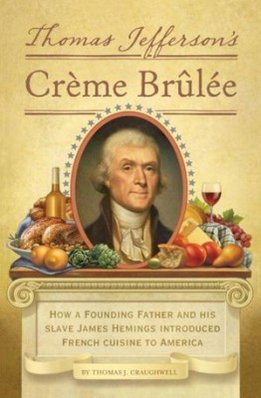
Our fave founding farmer/gourmande, TJ, from the book by Thomas Craughwell. Jefferson brought us broccoli, too....
Thomas Jefferson: Waffles, macaroni, parmesan, figs, ragout, soufflés, and anchovies (all of which he had developed a taste for during his travels in Europe), pineapple, turnip greens, Virginia ham, crab, shad, oysters, partridge, venison, and Madeira wine.
John Adams: Baked salmon, oyster rolls, codfish cakes, Baptist cakes, cream of corn soup, green turtle soup, scootin-long-the-shore, Plymouth succotash, Indian pudding, beggar’s pudding,flummery, syllabubs, gooseberry fool, and copious amounts of cider.
George Washington: Madeira wine, hazelnuts, sliced tongue and toast for breakfast, hoe cakes, rice waffles, macaroons, gingerbread, cream trifle, lettuce tart, mutton, assorted wild game, and beer.
Food Museums: Prague
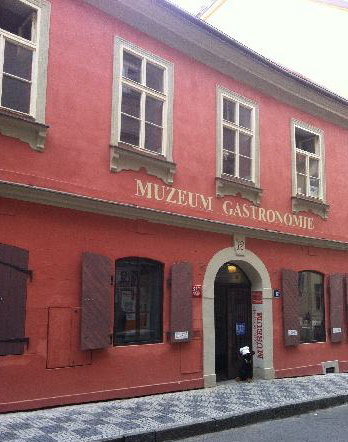
One of the few museums in the world dedicated to the history of food is now underway in Prague, after two years of planning. Bravo to them, we say! For a look at some of what's inside, please visit the Food Heritage page, then click on Food Museums.
Food Exhibitions: "Our Global Kitchen" Opens In New York
Food Revolution--Is There One?
(This piece originally appeared as a Guest Blog at VitalityTV.com)
Is there a food revolution going on? And if so, what does that actually mean?
To those of us living in the American suburbs or small towns of the 1950’s and 1960’s, when a pizza joint opened up, or a Chinese restaurant came in, that was revolutionary. And while our mothers made tasty meals for us at home, the first time we encountered a hamburger cooked at a roadside place, with fresh-made fries on the side, that, if not revolutionary, was eye-opening.
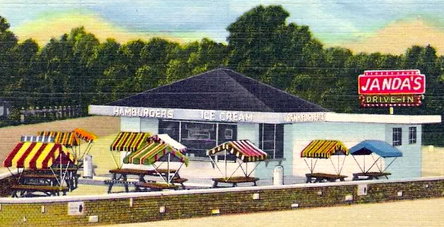 Janda's, Lyons, Illinois
Janda's, Lyons, Illinois
Of course the proliferation of what came to be known as “fast food,” was yet another revolution. The invention of the frozen French fry, the establishment of huge cattle feedlots and the portability of the corn syrup that formed the base for sodas, made possible the global growth of chains such as McDonald’s. That revolution, and the health challenges that have emerged along with it, continues to unfold across the world today.
In the 1970’s, those of us who had traveled in Europe brought back to the States a desire for many of the delights we had encountered there--like good coffee brewed up fresh in cafes, bread baked daily from whole ingredients, beer brewed in small batches, and artisanal cheeses made from friendly goats. Some of us started Starbucks, Whole Foods Market, and Sam Adams Brewery. That was revolutionary, at the time.
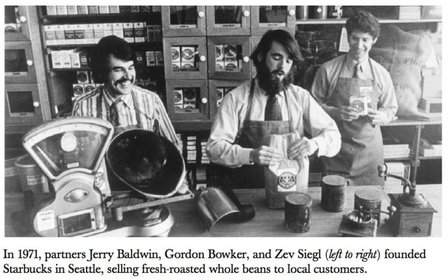
Via Sprudge
Some who returned from European sojourns established restaurants that revolutionized how food was grown, cooked and served. Chefs sought out local meats and veggies, grew their own herbs, and cooked what was seasonal.
In this same period, people disparaged as hippie “back-to-the-earthers” tried self-sufficiency, establishing food co-ops, and raising their own hens and veggies. Meanwhile, packaged “convenience” foods, agribusiness-produced crops, and the powerful supermarket chains that sold them gained ground.
Still, more and more people slowly became aware of the environmental costs of trucking food long distances, of using water that depleted underground aquifers, of raising crops with an overabundance of fertilizers and pesticides, of a changing climate that affected everyone.
Please continue reading here.
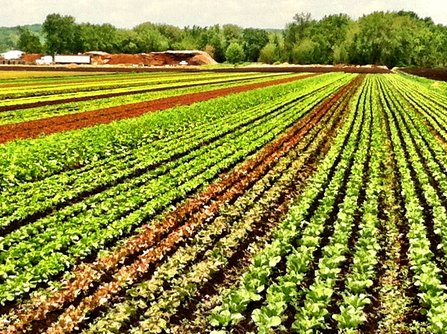
©The FOOD Museum
Fun with Diet
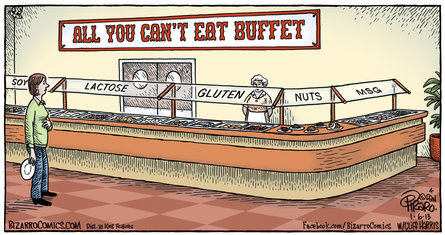 Spot on, Bizarro!
Spot on, Bizarro!
Food History: Nothing Fun Happening Here...
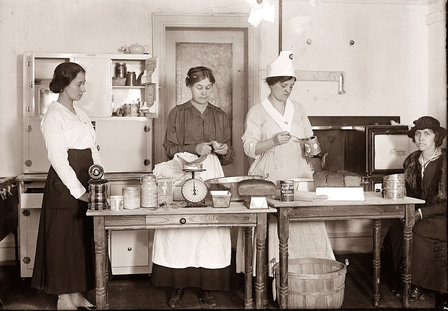
Making Hay: Scything is Back!
Food Culture: Grandmothers
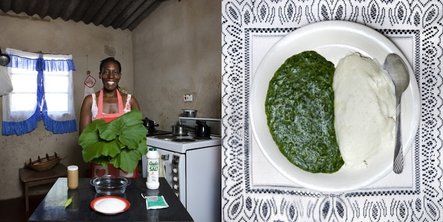 Italian photographer Gabriele Galimberti set out around the globe to capture grandmothers and their signature dishes in a project called Delicatessen with Love. This is Flatar Ncube, 52, of Victoria Falls, Zimbabwe, pictured with Sadza (white maize flour) and pumpkin leaves cooked in peanut butter.
Italian photographer Gabriele Galimberti set out around the globe to capture grandmothers and their signature dishes in a project called Delicatessen with Love. This is Flatar Ncube, 52, of Victoria Falls, Zimbabwe, pictured with Sadza (white maize flour) and pumpkin leaves cooked in peanut butter.
Food Stuff: Tanks
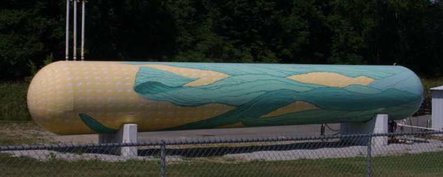
Incredibly enough, Ohio Barns is a website with a section dedicated to photographs of oil/propane/water tanks around the US that have been enhanced by artists pouncing on a vast, empty canvas. Naturally we, in turn, decided to feature a few foodish tanks, for your delight. This ear of corn is in Indiana.
The one below is in Kentucky.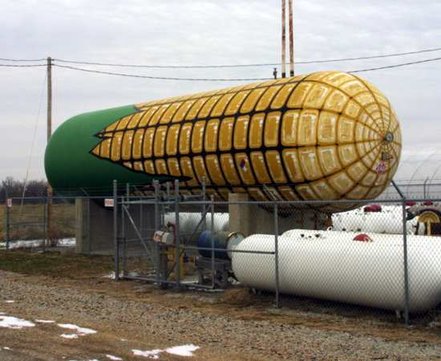
Watermelon grow big in Illinois!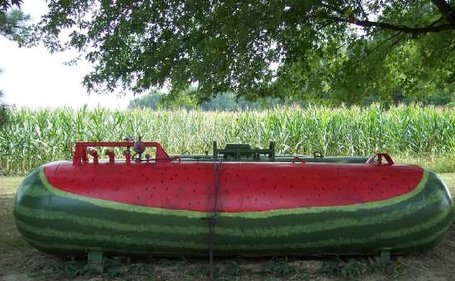
And one more fruit, this one in Honolulu...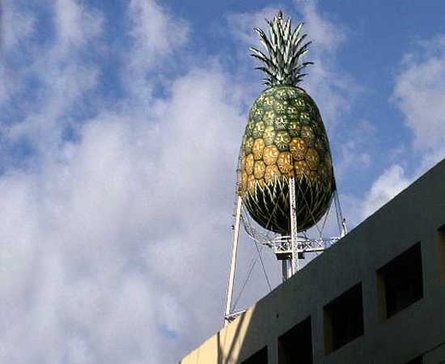
Food Historic Sites: Hills Brothers, San Francisco
Photo: San Francisco Museum and Historical Society
Food Historic: Tools/Gear
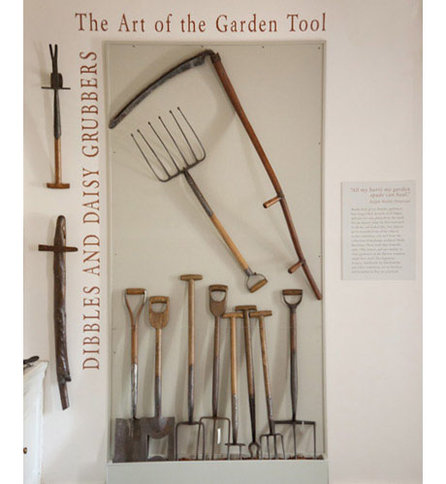 We missed this, yes, just ended. An exhibition of antique gardening tools collected by landscape architect Mark Morrison, and on display for three months in the Bronx, NY, at the Bartow-Pell Museum. The exhibition was titled "Dibbles and Daisy Grubbers: The Art of the Garden Tool." We want to know where this collection resides otherwise...(Via Edible Geography.)
We missed this, yes, just ended. An exhibition of antique gardening tools collected by landscape architect Mark Morrison, and on display for three months in the Bronx, NY, at the Bartow-Pell Museum. The exhibition was titled "Dibbles and Daisy Grubbers: The Art of the Garden Tool." We want to know where this collection resides otherwise...(Via Edible Geography.)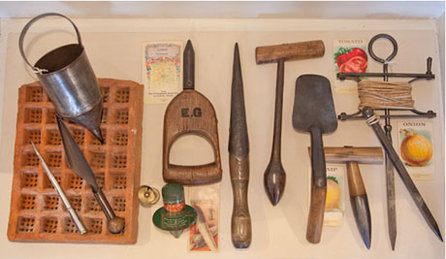
Food History: Sushi
Food Museum: Georgia Museum of Agriculture
An eclectic mix of farm tools, a Peanut Museum, a country store, an array of preserved village buildings, and even a Saturday farmers market under a new enclosure that resembles those of France's oldest outdoor pavilions, the Georgia Museum of Agriculture in Tifton, GA delivers. The Tift, Henry Harding Tift, after whom the town is named, left Mystic, CT, to venture into the timber business for his family's shipbuilding enterprises. Today his home is part of the Historic Village here, while Mystic Seaport back in Connecticut, interestingly, features its own Living Historic village.
One of the more intriguing connections between shipbuilding and food is rosin, the product derived from the sap or resin of long leaf pine trees. It was produced and processed in Georgia and elsewhere for use in building wooden ships. Right here at the museum we discovered that the locals once boiled their potatoes in an odd brew of rosin and water, for a piney tater with a taste unlike any other.
No spuds visible here, at Henry Tift's dining room table.
Food History: Frozen in Time
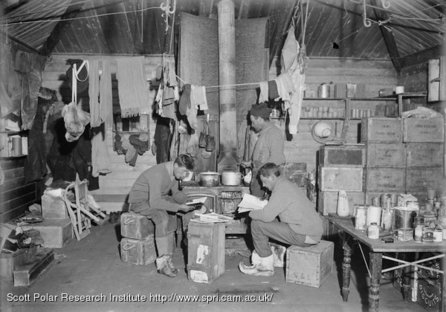
"First we eat, then we do everything else," as the incomparable "food" writer, MFK Fisher, once said in an interview.
Polar explorer Ernest Shackleton built and stocked this hut in Antarctica in 1908, shown here in full employ on February 17, 1911.
Today, in full color, a Google look at the hut, its foodstuffs frozen. Via Time.
.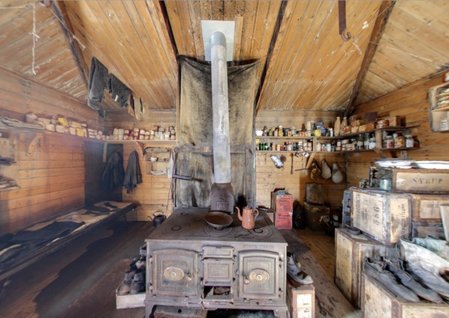
Food Historic Site: Hatton, AL
 The old Loosier Store in Hatton, AL, dating from the 1800's, photographed this year. Should it be saved/restored? Via Ancient Faces.
The old Loosier Store in Hatton, AL, dating from the 1800's, photographed this year. Should it be saved/restored? Via Ancient Faces.
Food History: This American (Fast Food) Life
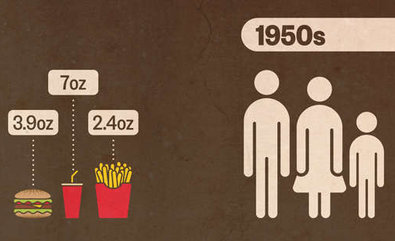
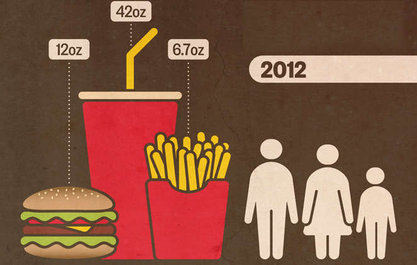
Hello, America! You are what you eat, and eat....
Graphic via Centers for Disease Control & Prevention
Food Historic: Victorians Had Dominion in the Dining Room, By Gum!
This dark, lofty, elegantly carved sideboard, or buffet, a backdrop to some highly polished silver, is anchored in the dining room at Lyndhurst Castle, in Tarrytown, NY. Typical of Victoriana of the mid to late 19th century, the piece features fruits and veggies, and, we recall, most likely some dead birds/rabbits. Thus is demonstrated both the dominion of the household's owner over edible bounty, as well as his access to it. Furniture on public view carried distinct messages, perhaps more then than now. Lyndhurst is a National Trust property.
Food Site: Saved!
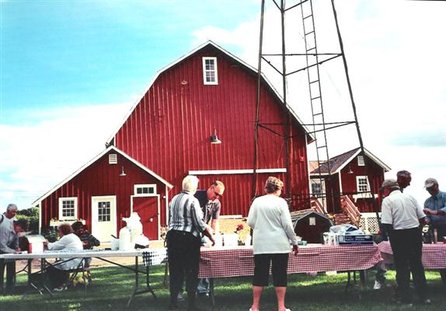
The Bruentrop Heritage Farm, a food historic site in Maplewood, Minnesota. " The Bruentrup Heritage farm was established in 1891. William Bruentrup married Ida Wagner and the bride's family gave them 40 acres of land along White Bear Avenue as a wedding present. They added land until it reached 175 acres. Four generations of the family have farmed there."
The farm, threatened by surrounding development, was saved through community effort. The project received a National Historic Preservation Award from the National Trust in 2000.
Food Heritage: The English Market, Cork, Ireland
Can Openers Exposed....
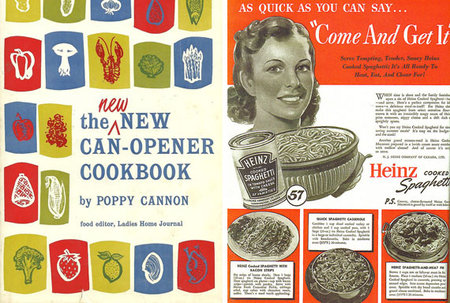
Etsy contributor Linzee researches and reports on that everyday item we never knew we needed, until, food came in cans.
When it comes to opening things, we’re a society of wimps. A push of the button engages gears and chains that lift our garage doors. One online retailer offers 880 items to slice open envelopes and another 2,700 to uncork wine. It’s even possible to purchase a device for breaching bananas.
This plethora of specially designed products stands in stark contrast to the tools first used to open cans— hammers and chisels. It wasn’t until 50 years after the creation of canned food that a dedicated opener appeared.
Canned foods were invented at the end of the 1700s, when the French ruler Napoleon needed a reliable way to feed his troops during wartime. Scurvy and malnutrition were taking their toll on his armed forces, and the government offered a 12,000 franc reward to anyone who could invent a way to preserve food so that it could be transported to the battlefield. In 1795, baker Nicholas Appert won the prize with his discovery that placing jars of food in boiling water prevented the contents from spoiling. But sterilized food in breakable glass jars solved only part of the problem. Around the same time, the Dutch Navy fed its troops salmon packed in tin-plated iron boxes. Thirteen of these found their way to the UK, and Briton Peter Durand patented the canning process in 1812. The first canning factory opened in London in 1813, and by the 1820s canned food was common in Britain, France, and the U.S.
Read the rest here.
Food History: Chicago, "A Delicious History"
The "New Moline" was a monster wagon weighing over 10,000 pounds and standing 16 feet high. Captured in this early 20th century image, the wagon cost an astonishing $1903. Via Vintage Postcards.
No To Natural Necco Wafers!
|
|
|
|
Back When Necco Wafers Were Naturally Natural “The Necco Wafer dates back to 1847 when English immigrant Oliver Chase invented the lozenge cutter enabling him to make the candies. The cutter is believed to be the first American candy machine, and Union soldiers during the Civil War carried the candies, then known as “hub wafers,’’ according to Necco.” The wafers are a product of New England Confectionary Company, Revere, MA. |
Today's Garish Wafers. Necco Marketing introduced vegetable-dyed wafers recently and American consumers resoundingly rejected them. No bright shiny colors! So, back to sucking on Yellow#5 and Red#40, America. Rather than improve the product, i.e.,add more beets for deeper color, Necco caved. |
What We're About

The FOOD Museum celebrates food, exploring its history, heritage, and cultural influence worldwide.
The Mother Spud
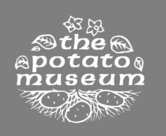 This all started with the splendid spud, back in 1975. Visit the site here.
This all started with the splendid spud, back in 1975. Visit the site here.
Like Our Mission? Thank You for Feeding Us. ( TFM is a 501c3.)

TFM on Facebook
Foodishness of Note
Aussie foodist, Jan O'Connell, writes food memoir; creates Oz Food History Timeline
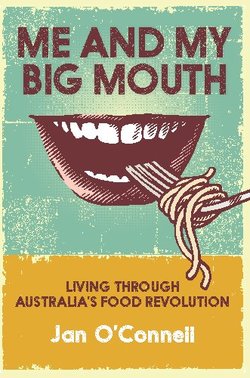
The timeline begins in 1780, and is being updated regularly to bring it up into the present day. O’Connell obviously knows the food history of Australia goes back much farther, but this is what she has bitten off thus far. It’s a terrific contribution to the food historic record.
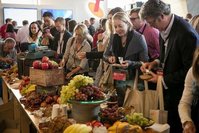
TEDxSydney, Australia, fed over 2000 people at the Sydney Opera House this May. Everything they ate was sourced from local small plots, front yards, windowsill boxes, and the like. The project involved many volunteers and was hugely aided by Grow It Local. Read more here.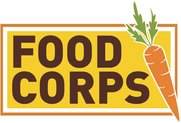
Underway for about three years, FoodCorps connects young food/farm-oriented people with communities where the connection between "real" food and children is weak. Somewhat like Americorps--from the start the two groups have been collaborating--attractive to the same idealists drawn to the Peace Corps, FoodCorps people aim to engage children in school with food-related lesson plans, to create vegetable gardens, and to encourage improvement in school lunch programs.
And much more. Read about FoodCorps here.
The Great Hunger Museum in Hamden, CT, at Quinnipiac University, just came to our attention. It opened end of 2012. How we missed this, we do not know. But clearly the story of the Great Hunger, the catastrophic event sparked by the failure of the Irish potato crop in the 1840's, is one rich in content. This museum intends to explore the failure of the powerful to aid the powerless.
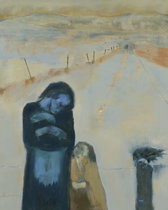
"Abandonment," by Charlotte Kelly,
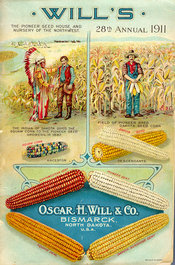
"...George F. Will, (was the) anthropologist son of Oscar Will, the Bismarck, N.D., seedsman who promoted Native American varieties in his catalogs. George F. Will co-authored Corn Among the Indians of the Upper Missouri in 1917, and this book remains one of the best sources on traditional Great Plains corn. Will collected and grew more than 100 corn varieties, which the catalogs describe in great detail. Sadly, many of those varieties are no longer available."
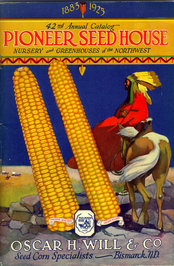
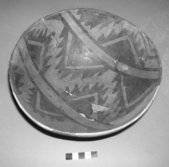
Corn and cacao may have gone hand in hand from Mexico up into the American West, into Utah, earlier than thought, centuries before traces of cacao were found on pottery at Pueblo Bonito in Chaco Canyon, New Mexico.
The latest on 8th century food in the April 2013 issue of Journal of Archaeological Science.
Image via Peabody Museum.
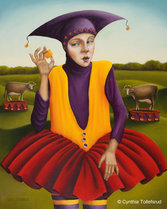
Food-appreciative artist Cynthia Tollesfrud's work--this one is "Cherishing a Chunk of Cheese"-- appears in Alimentum, a journal devoted to "the literature of food." The publication based in Nashville, TN is now a monthly.
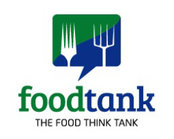
The thinking foodie's think tank. Established by Danielle Nierenberg, a globalist who has traveled and researched food system issues in over 35 countries, and Ellen Gustafson, an entrepreneur with a parallel interest and expertise who has zeroed in on the odd fact that the planet is home to 1 billion obese and 1 billion hungry people at the same time.
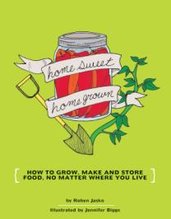
You know you want to! Grow your own food, in gardens, pots, large containers, rusty bathtubs. Just do it. This tome by Robyn Jasko might help.
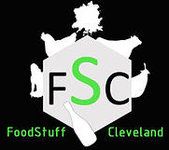
Take a look at foodstuff. It's into food policy, changing minds, invigorating dialog. Go see.
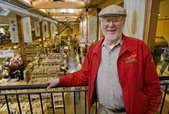
The grain and flour guy, Bob, of Bob's Red Mill Natural Foods, is handing over the company to his employees via an Employees Stock Ownership Program.
Read more here.
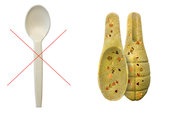 Yes, it's an edible/degradable spoon made from corn, wheat, and such. It comes in three flavors! So go get: Via Triangle Tree.
Yes, it's an edible/degradable spoon made from corn, wheat, and such. It comes in three flavors! So go get: Via Triangle Tree.
Eat veggies, drink wine, nap, chat, garden and live long on Ikaria.
By Dan Buettner, from the NYTimes magazine
Michelle Hansen rants, in the Guardian:
"Is there nothing we will not eat, never mind how we get hold of it? Shark's fin, tiny skewered song birds, bull's dick, monkey's brain, pig-snout, warthog's anus? All right if you're hungry and there's nothing else available, but not just because you're a poncy-dick gourmet/foodie, toss-potting about with your dinner, drizzling, injecting, wilting, sweating, couli-ing, pulsing and diddling with some strange bit of possibly tormented animal on the way to extinction."
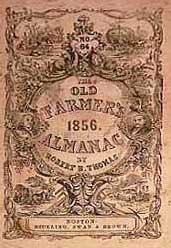
Since 1792!! Still the planting Bible for gardeners. The Farmer's Almanac.
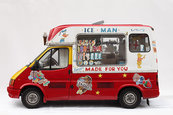 Brit ice cream vans, by photographer Luke Stephenson
Brit ice cream vans, by photographer Luke Stephenson
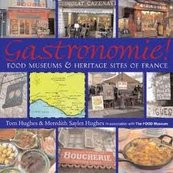 By The FOOD Museum's Meredith and Tom Hughes.
By The FOOD Museum's Meredith and Tom Hughes.


